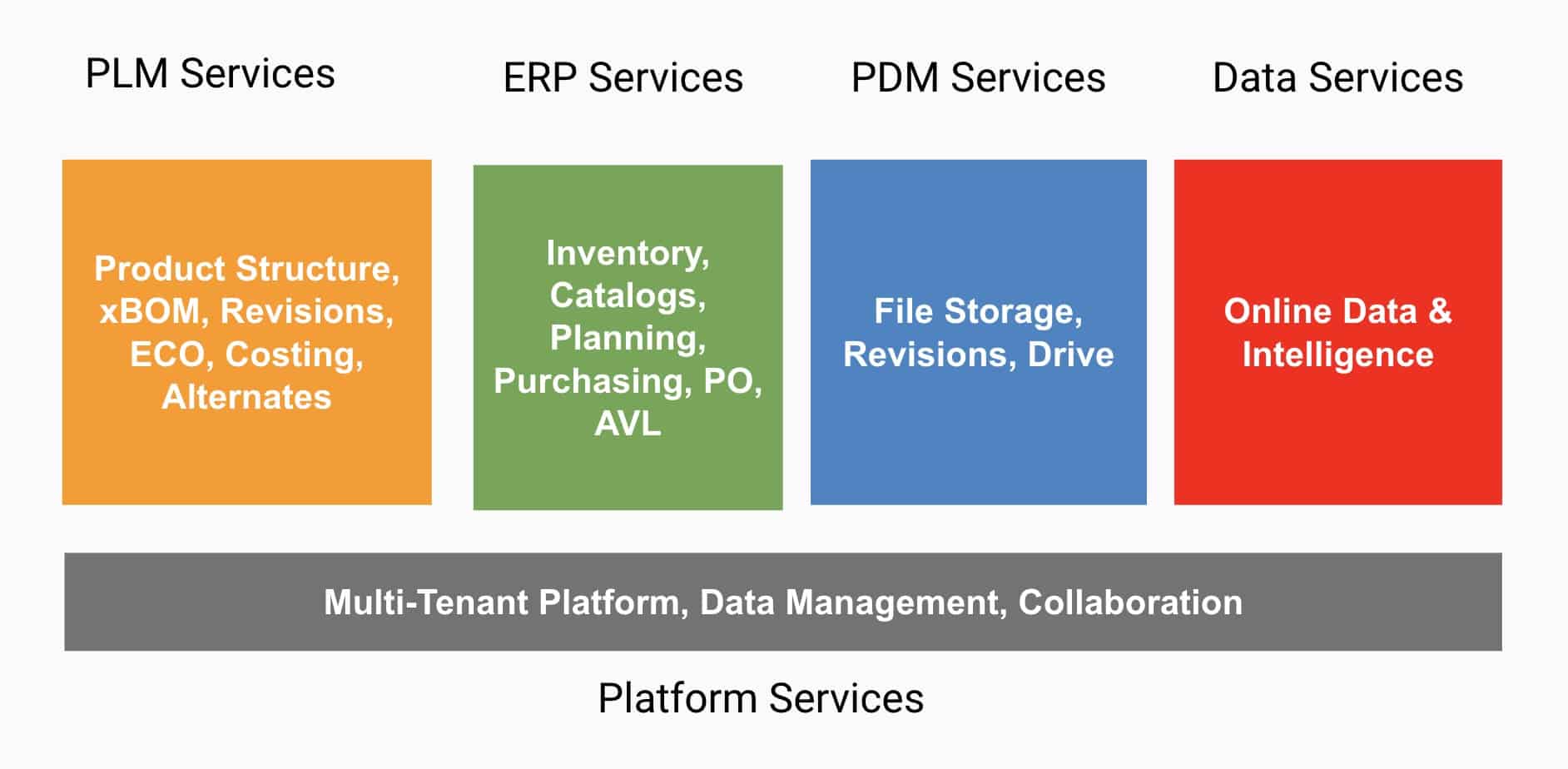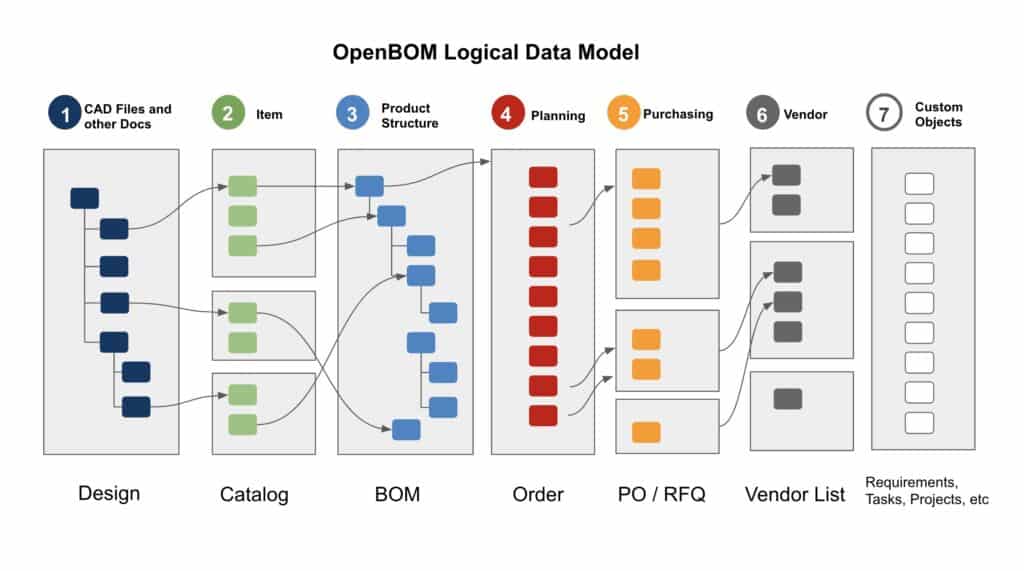
In the engineering and manufacturing landscape, product data management (PDM), product lifecycle management (PLM), and enterprise resource planning (ERP) systems are essential for success. Historically, these systems were introduced separately and grown in silos to support very large companies. In many companies, you can see multiple PDM systems managing different CAD data, enterprise PLM for release process, and ERP (sometimes multiple ERP software). The demand of all enterprise companies to connect these systems by introducing multiple integrations was around for many years. But it was never as important as we can see it these days.
Digital Transformation is the top priority these days. Size doesn’t matter. All companies from very small to large enterprises are looking at how to digitally transform their processes and switch from data silos to connected information flow. And this is why many companies are looking at a new concept of digital thread – a way to connect product data in different lifecycle stages together to enable seamless process organization and to escape painful document exchange with Excel files moving between organizations and systems.
PDM, PLM and EPR typically represent different product lifecycle stages and are responsible for different processes. In order to streamline processes and ensure that everyone is working with the most up-to-date information, these data silos (and systems) need to be connected. That’s where the OpenBOM digital thread comes in.
Online Services
OpenBOM is a novel platform that was built ground up using modern cloud architecture, scalable data management, and the ability to support multiple companies working together. Unlike many legacy software products, OpenBOM is a cloud-native online SaaS, which is available globally and provides online services using a multi-tenant data management platform. When building OpenBOM we’ve been thinking about multiple services and ways OpenBOM can support different companies. The solutions provided by OpenbOM can be grouped by multiple services and consumed via API as well as browser-based applications, specialized integrations, and desktop-connected tools.
Scaling from SME to Enterprise
As we started OpenBOM, we’ve been thinking about how OpenBOM can provide a solution by serving the most underserved SME business and then growing to a larger enterprise. What we learned is that SMEs are struggling to integrate large enterprise software systems (PDM, PLM, ERP) and looking for a set of SaaS services that can combine PDM, PLM, and ERP functions, to support their agile, nimble, and fast processes.
This is how we came to online services connected in a single solution. In the picture below you can see an overview of OpenBOM solutions covering multiple disciplines of engineering and manufacturing software. To simplify the terminology and understanding of functions, I outlined them as follows: platform services, PLM services, ERP services, PDM services, and Data services.

However, we didn’t stop with SMEs and we see how larger enterprise organizations are adopting OpenBOM. While they are not replacing their legacy PDM, PLM, and ERP systems(yet), they start to see OpenBOM as a solution for agile new product development (NPI) where connected services provide clear advantages helping to go quickly from design to product release, inventory control for prototyping and purchasing. Another place where enterprise companies are looking to adopt OpenBOM is supply chain management where OpenBOM’s multi-tenant platform is a key enabler for multiple companies working together and sharing information.
How the OpenBOM Digital Thread Works
OpenBOM is a cloud-based software that organizes and produces information connected between multiple services representing PDM, PLM, and ERP data in one place, helping companies to run through their entire product development cycle. This digital thread ensures that everyone has access to the same information, so there’s no risk of miscommunication or errors. In addition, OpenBOM provides real-time visibility into the status of your product development, so you can identify bottlenecks and potential problems early on.
In the picture below you can see the main OpenBOM data objects and services representing the digital thread.

The OpenBOM digital thread starts with your PDM service – OpenBOM Design managing folders and files. It represents the design lifecycle and helps engineers to manage engineering files. All of your product data—including 3D models, drawings, and specs—is imported into OpenBOM Drive and support versions. OpenBOM CAD integrations can also connect to online design services in such a way that OpenBOM not only can manage files but also connect to SaaS CAD systems. From there, it automatically creates items and BOMs to create a complete product structure representation to manage the product lifecycle, revisions, and ECO processes. All engineering data (product structure) can be used to create a planning BOM (Order) for the purpose of batch production planning, Vendor, RFQ, and PO management. The data is fully connected. This means that every time a change is made in your PDM system, it’s immediately reflected in your Items/BOMs and Orders. As a result, everyone always has access to the most up-to-date information. In such a way, OpenBOM provides a set of online services to help any SME company in different industries manage their data and processes. Check OpenBOM customer stories for more information to learn how SME manufacturing companies are literally running their businesses using OpenBOM.
Ongoing Development and OpenBOM Web Servies
OpenBOM is continuously developing and bringing new features, capabilities, and services. In such a way OpenBOM is growing to support large companies with more functions and solving bigger problems. For those companies that are looking at how to step from the publicly available multi-tenant OpenBOM platform, we are coming up with OpenBOM Web Services.
Let’s speak about OpenBOM services. This is a new model, that’ll soon be introduced by OpenBOM. Modern cloud-native systems play the role of “services” that can be available on-demand from these platforms to solve problems. These new services are compatible (thanks to REST APIs and cloud technologies) and can be recombined together to build solutions. Think about multiple database services (eg. RDS), analytics (Machine Learning and AI services), and others. OpenBOM services will be a way for enterprise manufacturers to get an instance of the OpenBOM multi-tenant platform and run it in their private cloud environment on top of AWS or other PaaS. We’ve been providing OpenBOM Enterprise subscription services as a way to have a custom hosting environment for OpenBOM – your selection of PaaS or private cloud. Now it is time to take the next step and talk about Enterprise SaaS, which is a new model trending in the industry for larger companies.
Conclusion:
The OpenBOM digital thread is the key to connecting PDM, PLM, and ERP services together, making them available seamlessly for SMEs and growing into OpenBOM web services capable of providing solutions for enterprise companies and supply chains. The fundamental idea of online services is to keep everyone on the same page while scaling systems and data, connecting data siloes, and organizing information into connected data sets – a digital thread. With real-time visibility into the status of your product development process, you can identify potential problems early on and take corrective action before they cause delays or cost overruns. SMEs are getting OpenBOM as a single platform to run their business. Larger companies are adopting OpenBOM for NPI and expanding into supply chain management in the future.
If you’re not already using OpenBOM, now is the time to give it a try! REGISTER FOR FREE and start your 14-day trial today.
Best, Oleg
Join our newsletter to receive a weekly portion of news, articles, and tips about OpenBOM and our community.










